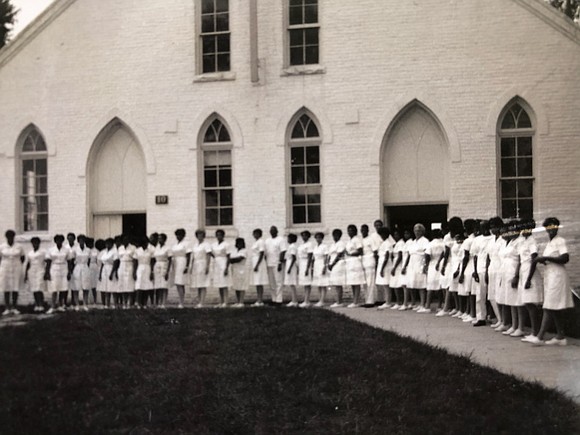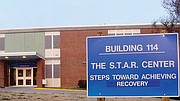Central State Hospital commemorates 150 years of serving health needs
George Copeland Jr. | 10/1/2020, 6 p.m.

A key part of African-American health and history in Virginia was celebrated last Thursday, as state health officials and professionals gathered online to commemorate the 150th anniversary of Central State Hospital outside Petersburg.
The virtual event was a significant shift in plans for the commemoration, which initially was to take place on the grounds of the hospital but was moved online because of the coronavirus pandemic.
“2020 is a year of celebration of services to individuals with disabilities and serious mental illnesses,” said Dr. Robert O. Forbes Sr., a psychiatrist and former medical director at Central State Hospital who retired in 2018. He is now a member of Friends of Virginia’s Central State Hospital, an interest and advocacy group. “It’s a year of celebration and heartfelt thanks to all those who have served.”
Central State Hospital’s origins can be traced to December 1869 when Edward Canby, a Union Army general and acting military governor of Virginia in the wake of the Civil War, ordered a former Richmond Confederate hospital be converted into a state asylum for African-Americans with mental illnesses.
A year later, the Virginia General Assembly incorporated it as a state institution, then called the Central Lunatic Asylum, and gave it a new purpose— to house and treat “colored persons of unsound mind” from across the state.
It was the first of its kind in the United States. At the time, it housed 123 “insane persons and 100 paupers, not insane,” according to the history.
Central State gradually grew over the years, moving from Richmond to Dinwiddie County on a sprawling farm purchased by the City of Petersburg. It was renamed Central State Hospital in 1894 and expanded through the decades to accommodate a wider variety of illnesses and conditions, including a geriatric treatment center for the chronically ill, a maximum security forensic unit where people referred by the court system are evaluated and treated, and facilities for the treatment of adolescents and patients needing alcohol and drug treatment.
In 1968, several years after the passage of federal civil rights legislation, the state of Virginia desegregated its hospitals, and Central State, which had been designated solely for the treatment of African-Americans, opened to all patients, regardless of race.
Currently, Central State Hospital has 229 patients and 829 full-time staff. In addition to its civil unit, it also houses the only maximum-security mental health unit in the state.
Throughout its history, Central State hosted a number of performers, including Louis Armstrong, to entertain patients and staff, nursing classes for African-Americans and a variety of community and volunteer events. Some activities served as both a way to build connections between Central State and Dinwiddie County and a coping method for patients. Those speaking at the commemoration often mentioned this legacy, praising Central State for its importance to Virginia then and now.
“I want to thank you for the work that you do to serve our most vulnerable Virginians and to treat them with compassion,” Gov. Ralph S. Northam said during his virtual address. “You are building on a 150-year legacy of service.”
As part of Central State’s commitment to that service, an agreement was reached with Virginia officials last year to build a new $315 million facility with more modern accommodations for patients and to address a number of technological and logistical concerns on the 543-acre campus. This includes increased security and safety, enabling better collaboration between staff and making Central State a greater part of the community, as detailed by Dr. Brandi Justice, interim chief executive officer of Central State Hospital.
The new facility would replace 13 outdated buildings.
However, those present at the anniversary commemoration made clear that the new facility wouldn’t make up the whole of Central State’s work, but would be a tool used in the service of others.
“We are not a building,” Dr. Justice said. “We’re a community and a people and that building is just going to make it that much easier to take care of the people we’re serving.”
Right now, the new Central State facility is still in the design phase, with construction projected to start in the summer of 2021, according to Alison G. Land, commissioner for the Virginia Department of Behavioral Health and Developmental Services.
During the commemoration, Central State officials, staff and supporters said they remain committed to ensuring a continuation of the hospital’s “150 years of consistent service,” as Dr. Forbes called it.
“Some very special things have gone on in Central State, are going on in Central State,” Dr. Forbes said, “and will as we look to the future.”








